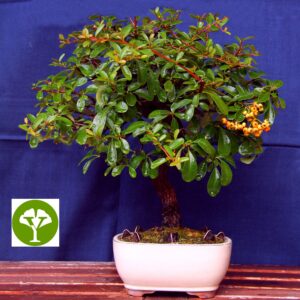Let’s start by making an apparently strange premise: bonsai are trees, they belong to the plant world and as such they independently produce their food with photosynthesis. Bonsai are not animals and therefore they produce their food on they own. Their food is not ready to be eaten! An “animal” approach could therefore lead us to think that fertilizer is an “already cooked” food and that the more we give it the more the bonsai will grow… but it is not!
The fertilizer is a help that we give to our plant to produce food and to assimilate it better. So when we fertilize a bonsai we are not feeding it, we are preparing table for lunch!
Among the substances and sources of energy that the bonsai uses to produce its food, the main ones are certainly water, oxygen and light. There are others and the main ones are Nitrogen (N), Phosphorus (P) and Potassium (K). These three substances are contained within the so-called organic (organo-mineral) fertilizers that we would like to suggest for your bonsai. Among these are the slow release solid ones, normally sold in the form of pads (which we can comfortably place on the ground and fasten with copper wire).
We consider the use of slow release organic solid fertilizer. We believe that it’s the one that presents the least risks, especially for those who are new to the bonsai world and in any case more respectful of the rhythms of the plant.
At each watering, the water will erode a small part of the tablet thus dissolving N, P and K within the soil in absolutely sustainable doses for any bonsai.
When: fertilize your bonsai during the vegetative season, outside of this period the fertilizer is not needed, because the bonsai stops its activities. Therefore, for outdoor bonsai, let’s avoid fertilizing in the winter period, approximately from November to March. For indoor plants (which work all year round, even if production slows down in the winter months) it is advisable to continue fertilizing once a month in winter, too, using an organic liquid fertilizer to replace the solid one.
In spring we start fertilizing when the plant has started its activities; in the case of a broad-leaved tree, for example, we will start fertilizing when the new leaves open. In the case of a juniper when the tree regains color and vigor after the winter break or, in the case of a pine, when it begins to open the candles.
We also avoid fertilizing during the “great heat”, approximately in the months of July and August: the plant does not work when it is too hot, giving fertilizer is not useful.
Let’s never forget to fertilize between September and October (if the temperatures allow it already at the end of August): this so-called “autumn” fertilization is essential to allow the plant to accumulate enough nutrients inside it that will favor the spring restart.
How: as mentioned, we suggest using slow release organic fertilizer. We place a suitable number of pads on the ground and fasten them with copper wire (we can also press them into the ground without using wire or bury them under the moss). A rough indication may be to use one tablet next to another, for the entire perimeter of the jar, leaving two / three empty spaces between one tablet and another.
A couple of times a year (in early autumn and late spring) it can be very useful for our bonsai to administer micro-elements. These are substances that trees use to a lesser extent than those listed above and stimulate physiological development by ensuring constant and optimal metabolic activity. These are for example iron, manganese, zinc, copper, boron. They are readily available on the market and are usually sold in liquid form to be dissolved in water.
Was this article good for you? You can leave a comment or ask a question (Posting will be subject to approval)

